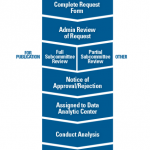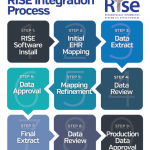Dr. Bajaj, who is working closely to connect his institution with the RISE registry, says no rule of thumb exists for rheumatologists to abide by in this space, but sequential mapping and monitoring of their data on RISE can be very helpful. The specialty and its patients will improve if its providers stay committed to clean data entry and then put those data to work.
“Providers can, 1) use the data for benchmarking and doing quality improvement in their practice, and 2) do advanced research with big and high-quality data. But to make this successful, we need to make sure that the data in the RISE registry are correct and accurate,” he explains. “We need help from providers, because this is not something RISE or the RHIT Committee or the ACR can do by itself.”
Richard Quinn is a freelance writer in New Jersey.
References
- Miliard M. EHRs are overflowing with copy-and-paste records, JAMA study shows. HealthcareIT News. 2017 May 3.
- Bowman S. Impact of electronic health record systems on information integrity: Quality and safety implications. Perspect Health Inf Manag. 2013 Fall;10(Fall):1c.
- Graber ML, Siegal D, Riah H, et al. Electronic health record-related events in medical malpractice claims. J Patient Saf. 2015 Nov 6. [Epub ahead of print]


